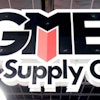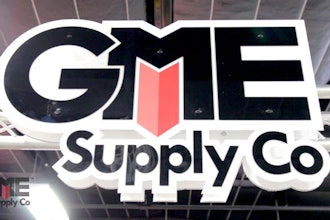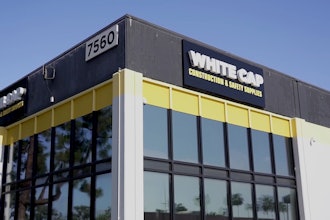UNLOCK YOUR DATA • UNLEASH YOUR SALES
FORECASTING THE
IMPACT OF MASS PRICE
CHANGES ON PROFITS
E-book
FORECASTING THE IMPACT OF MASS PRICE CHANGES ON PROFITS
1
Contents
How A Mass Price Change Could Backfire ...........................................
Mass Price Change Advantages And Risks ...........................................
How Organizations Forecast The Impact Of Mass Price Changes ...........
Improving Your Forecasting Precision ...................................................
Key Technologies For Managing Mass Price Changes ...........................
Conclusion .......................................................................................
2
3
5
7
10
12
FORECASTING THE IMPACT OF MASS PRICE CHANGES ON PROFITS
2
HOW A MASS PRICE CHANGE
COULD BACKFIRE
Your company is a leader in your B2B space, and sales have been good over
the last year, so you announce a mass price increase. You’re confident that your
competitors will see this move as an opportunity to raise their own prices, and follow
your lead as they have in the past.
You send out a press release announcing the mass price change to your market.
Your press release indicates a 5 percent increase across the board, but that’s
just a guideline. Your sales reps are still going to tailor the actual increase for
each customer. Even without sophisticated pricing optimization tools, the sales
organization decides on 1 to 8 percent increases for specific products or customers.
But when the announcement goes out and you raise your prices, you realize you’ve
made a mistake. None of your competitors follow suit.
Perhaps your competitors knew about certain factors in the market you didn’t take
into account. With their lower prices, they begin attracting some of your more price-
sensitive customers.
A few months in, the revenue and margin increases from the price change are far
lower than what you forecasted. To remain competitive, you start slowly backing
away from the higher prices you’d announced.
That’s just one of the many ways a mass price change could backfire.
SUMMARY
Raising your prices and
having none of your
competitors follow suit is
one of the many ways a
mass price change could
backfire.
FORECASTING THE IMPACT OF MASS PRICE CHANGES ON PROFITS
3
MASS PRICE CHANGE ADVANTAGES
AND RISKS
Mass price changes go by a variety of names: general price increase; annual price
increase; catalog pricing; catalog refresh. It’s almost always a top-down tactic to
produce a revenue uplift or margin uplift. An executive needs to secure a $5 million
uplift in revenue, for example, and starts looking for options to achieve it.
Some people differentiate between a general price increase for customers and
a general list price change — these adjustments could take place separately or
simultaneously. Whatever you choose to call it, many organizations announce these
general price changes on an annual or quarterly basis.
These general price changes affect a number of records across a geographical
region, a product line or a segment. (In this context, “segment” could mean
everything from a product and the additives it contains or manufacturer, supplier,
geography, etc.) They differ from customer-specific price changes, which are more
operational and take place throughout the year, rather than all at once.
Trying to change prices in a single, annual event is expensive and difficult for many
companies. The labor you need to manage pricing rises by as much as 80 percent
during that annual event, which is a huge drain on your pricing team’s resources.
Some companies try to get around it by adding staff to get through that annual
event, but those analysts are then underutilized the rest of the year.
But there’s still a strategic need for companies to perform and announce mass price
changes.
Here are a few strategic reasons for announcing a mass price change:
SUMMARY
It’s often expensive and
difficult to try to change
prices in a single, annual
event. But there’s still
a strategic need for
companies to perform
and announce mass price
changes.
FORECASTING THE IMPACT OF MASS PRICE CHANGES ON PROFITS
4
1 Indicating your broad intentions within your sector: In most industries, there’s no
legal reason why you can’t discuss what you’re doing with your business and
pricing at a very high level. You’re also allowed to mention those kinds of details
when you talk to Wall Street or publicly traded companies.
While these broad announcements are allowable, you do have to be careful:
Keeping your sector informed is one thing, but you don’t want to cross the line
into price signaling.
2 Giving your customers advance notice to change their own prices: Your
customers need time to adjust to your price change — especially when they
are selling through distribution. They need time to update their price list and
catalogue, flush out old inventory at one price level and get new inventory at the
new price level.
Due to this administrative burden, supplier contracts typically require 30 to 60
days’ notice before a price change. The need to announce a mass price change
well in advance is one reason many organizations follow a once-a-year cycle.
3 Letting end consumers know what the manufacturer is doing: Good distributor
partners love mass price change announcements, because they give them
permission to raise prices potentially even more. When having price increase
conversations with end consumers, distributors are able to blame the increase
on the manufacturer. Announcements may also help drive up orders, artificially
increasing demand.
Those are a few of the advantages. But don’t forget about the risks.
For example, if the executives behind the price change didn’t have a well thought-
out plan for execution, some of their forecasts may be unrealistic. That leaves the
sales organization in a situation where you’re likely to miss revenue and margin
targets.
A mass price increase could also have unintended consequences for your product
mix. If you’re doing a smooth price increase across the board, you may force your
customers to switch from your best offering to a good-enough offering. In this case,
the volume may still be there, but it may be driving customers to less-profitable
products.
In most industries, there’s no
legal reason why you can’t
discuss what you’re doing
with your business and
pricing at a very high level.
FORECASTING THE IMPACT OF MASS PRICE CHANGES ON PROFITS
5
In the worst-case scenario, you announce a price change and your competitors
don’t follow, resulting in loss of volume and margin as your customers look
elsewhere. This resets the market, and now you have to be even more aggressive
to win those customers back. For example, a company may have been a nice,
profitable customer for you in the past until your pricing forced them to go with a
competitor. Now, you’ll need to offer an even lower price than they had before to
regain their business.
For a successful mass price change, you need a way to mitigate these risks while
making the most of the advantages. How different organizations manage this price
increase varies considerably, depending on their maturity.
HOW ORGANIZATIONS FORECAST THE
IMPACT OF MASS PRICE CHANGES
A mass price change is a broad, general increase at a global level. What little
segmentation occurs tends to happen at only the highest levels, such as different
prices for North America and Europe, for example. These general, high-level
changes are especially common in immature organizations.
The basic process starts as a top-down, high-level strategy that looks at a variety of
global factors, such as commodities and industry-wide trends, and compares them
against your product offerings, market presence and profit trends. A price change
might be a way to capture increased commodities costs, for example. Starting at
this high level ultimately helps you forecast the impact of the mass price change.
But your segmentation doesn’t have to be this blunt in a mass price change. More
mature organizations use a variety of targeted strategies for more precise forecasts.
You could use the tradition and expectations of the mass increase to announce the
change, but then use a finer, more segmented approach when implementing the
changes for individual customers, analyzing buying characteristics, order frequency
and other factors.
SUMMARY
Mature organizations
use a variety of targeted
strategies to develop more
precise forecasts. They
put significant effort into
understanding the bottom-up
impact.
FORECASTING THE IMPACT OF MASS PRICE CHANGES ON PROFITS
6
Mature organizations put significant effort into understanding the bottom-up impact
and connecting it to these high-level trends. This allows them to better forecast any
margin erosion between what’s announced and what’s actually realized. These
bottom-up considerations examine product lines, specific SKUs and individual
customers to forecast how much a price change is actually going to transfer to
specific customers. Rolling all of that data up gives you a more accurate forecast
than high-level trends alone.
The ultimate price increase forecasting goal — which very few companies are
currently capable of pursuing — is the ability to overlay increases with contract
terms and conditions.
If a customer’s contract is about to expire or roll over into the next period, for
example, the price increase should be carefully timed so that it doesn’t have an
impact on the contract renewal. In this kind of situation, you might want to wait until
the contract rolls over before you execute the price increase.
To truly understand the best opportunities and potential pitfalls in a price change,
you need a sophisticated pricing optimization system. This type of system enables
you to analyze the top-down and bottom-up factors, then overlay them with
individual customers’ contract terms and conditions, such as price protection
clauses, cancellation periods and so on.
To truly understand the best
opportunities and potential
pitfalls in a price change,
you need a sophisticated
pricing optimization system.
FORECASTING THE IMPACT OF MASS PRICE CHANGES ON PROFITS
7
IMPROVING YOUR FORECASTING
PRECISION
When you’re looking for ways to accurately forecast the impact of a mass price
change, the key is precision in your data and analysis, strategy and process. Your
organization’s capacity for this precision depends on your pricing sophistication.
On one end of the spectrum, you have the most basic forecasting methods;
on the other end, you’re applying segmentation that offers greater granularity
and precision. In between these extremes, there’s a continuum of increasingly
sophisticated forecasting techniques.
For example, if it makes sense for your business, you may choose to run all sorts of
price elasticity analyses. If you have market share data, you might want to know
how much your price changes are going to affect your share of the market. If you
have a good handle on industry-wide trends and believe the market is going to
grow by 4 percent, you want your growth to exceed that.
All of those techniques could be used in conjunction with a price increase to try to
predict the outcome. But you’re only able to use the techniques supported by your
current system.
Here are three levels of forecasting, from one available to the least mature
organizations to those only accessible to the most sophisticated:
1 Macro-level forecast: When you announce a 3 percent price increase across
the board, you’re forecasting a simple uplift to business. You’re saying that
profitability is 18 percent today, and tomorrow it will be 21 percent, due to this
3 percent increase in revenue.
This is the most basic approach, and it’s available to organizations that don’t
have a pricing team. It’s relatively easy, so the sales or marketing teams don’t
require a pricing analyst.
SUMMARY
Accurately forecasting the
impact of a mass price
change requires precision
in your data and analysis,
strategy and process.
FORECASTING THE IMPACT OF MASS PRICE CHANGES ON PROFITS
8
All you need to come up with a high-level estimate are a few lines in a
spreadsheet with some gross assumptions. But there are several ways to add
nuance to this approach. For example, if your procurement or supply chain
organization is putting together cost increase estimates for the next year, you
could layer that into your forecast.
Even the broadest segmentation improves the precision of your forecast. If you
have different prices for the U.S. and Europe, for instance, you could factor in
a weighted average based on the amount of revenue you’re expecting in those
regions.
Unfortunately, this type of forecasting doesn’t give you a good idea of what
to expect when you implement a general price change. It’s only useful for
companies that aren’t yet ready to apply full segmentation, full precision and
timing elasticity.
2 More targeted, precise calculations: To improve your forecasting, include
analysis of your market, customer behavior, company objectives, and contract
terms and conditions. Companies that are midway between immature and fully
mature tend to employ one, two or three of these techniques, but not all four.
These factors improve the accuracy of forecasting because they take your high-
level estimate and refine it in whatever dimensions make sense for your business.
Companies may want to use all those factors to make precise estimates, but
lack the necessary technology, data and overall sophistication. They may have
a great idea for forecasting, but don’t have the capacity to bring all of those
factors into consideration.
With a mass price change, a macro forecast that estimates a 3 percent increase
across the board probably isn’t realistic. To get a more realistic, precise and
granular estimate, you apply all the information you have about the market,
contracts, internal company goals and customer behavior. These techniques
allow you to estimate the impact of the change on actual price, volume and mix.
Combining these estimates gives you a better predictive forecast.
To improve your forecasting,
include analysis of your
market, customer behavior,
company objectives,
and contract terms and
conditions.
FORECASTING THE IMPACT OF MASS PRICE CHANGES ON PROFITS
9
If you’re at the low end of the maturity scale, you’re less likely to hit the targets
that you set. When measuring the effectiveness of forecasting, you’re comparing
baseline, expected and actual revenue, and measuring the delta.
Maturity also plays a role in your ability to quickly correct course. Everyone’s
forecasting is off sometimes, but mature companies know when, why and how
to fix it. Less mature companies are effectively averaging, and the impact of
averaging all those results to do your assessments means that it’s very hard
to tease apart what the root cause is, and takes longer to react. Having more
granular analysis is important because it allows you to find deviations from your
forecast and react more quickly.
3 Bringing your own company’s needs into the forecast: At the highest level of
maturity, your forecasting takes into consideration your own company’s needs,
as well as the market conditions, contract terms and conditions, future growth
potential or limiting factors. Your organization’s maturity is the sum of where you
are across all of those different areas.
While technology is one of the key elements, maturity means a balance of
the right people and processes, tools and strategy. If you put in a pricing
optimization tool without the supporting elements, it’s just a wasted investment.
On the people front, you need strategic people capable of defining and
setting strategies, as well as pricing analysts capable of building models
and leveraging tools and data to get results and make any necessary course
corrections. You also need collaborative people in your organization (especially
in your sales team) capable of using direction from the strategy and pricing team
to execute in the marketplace, and provide meaningful input on the process.
To understand your company’s needs and build them into a mass price change,
you need internal negotiations between pricing and sales. These two teams
should review individual accounts as part of planning the mass price change,
determining what increases to announce and how they apply to each region,
as well as identifying any contracts that would prevent you from applying the
changes.
These three levels outline the two extremes and midpoint along the maturity
spectrum. If you’re at the first level, don’t expect to jump to full maturity at once;
organizations normally follow a stair step approach as they improve their
forecasting capabilities.
Everyone’s forecasting is
off sometimes, but mature
companies know when, why
and how to fix it.
FORECASTING THE IMPACT OF MASS PRICE CHANGES ON PROFITS
10
KEY TECHNOLOGIES FOR MANAGING
MASS PRICE CHANGES
When it comes to planning and implementing mass price changes, it’s essential
to have the right technology infrastructure in place. As much as companies
acknowledge that they’d be better off doing forecasting at the transactional level,
they often lack the data structures and technology to achieve those benefits.
Where you are on the maturity continuum has a lot to do with your ability to bring
transaction-level data into your analysis and forecasting estimates.
Companies should typically start by investing in core process enablement, such as
enterprise resource planning (ERP) systems. ERP focuses on the core processes to
enable their supply chain and manage transactions with other financial systems.
The next step is to add a customer relationship management (CRM) system with
price management tools. When you’ve already implemented an ERP system to
manage your supply chain, you’ve done much of the heavy lifting in terms of
organizing and consolidating your data. This sets the stage for taking further
advantage of that enterprise-wide investment by developing a mass price change
process.
If you have your CRM and ERP systems working together, it saves you from over-
engineering your ERP system to handle functions that would be more appropriate for
your pricing software to handle. There’s a huge upside to that integration in terms of
getting greater value from your business data.
Many organizations have used an ERP system for 10 to 20 years and are looking
for additional applications that would help them get more value from it. Much like
an ERP system, pricing software really affects all of the organizations within an
enterprise. That may make pricing more difficult than implementing something like
a CRM system, which typically only affects sales, but the ultimate benefits of pricing
software have a far-reaching impact.
SUMMARY
You need the right
technology infrastructure in
place to plan and implement
mass price changes. Start
by ensuring your CRM and
ERP systems work together.
FORECASTING THE IMPACT OF MASS PRICE CHANGES ON PROFITS
11
Effective price change techniques require data and transaction-level detail. If you
have disparate systems that make it difficult to access and use that transaction data,
your potential upside is much smaller.
Again, it’s important to balance technology investments with improvements in your
workforce and processes. This is often an iterative improvement. You don’t want to
map your processes, only to realize they don’t make sense when you buy a new
CRM platform. Your original process may have included elements based on the
limitations inherent in your previous tools, and you don’t want to build a whole
process around those limitations. For example, your current process may indicate
that you need four days to run the forecast model, while it only takes two hours with
the new technology.
To keep your people, process and tools in balance, try to map your processes
to a certain level and stop. Put in the technology and get it working for you, and
then continue the process mapping where necessary. That way, you’re not over-
engineering your process or your technology.
You make incremental improvements as you implement the technology. Even if
you’re immature, you’ll gain something by taking technology into your planning. If
you’re at a medium level, you still gain by leveraging technology.
FORECASTING THE IMPACT OF MASS PRICE CHANGES ON PROFITS
12
THINK OTHERS MAY BE
INTERESTED? SHARE THIS
E-BOOK:
CONCLUSION
Even with the latest pricing optimization software, there’s still a strategic need for
companies to perform and announce mass price changes. But rather than making
these changes in one fell swoop, it’s best to take a more tactical approach, updating
pricing at different times of the year across different customer segments.
While it’s unlikely that customer contracts will change to allow price updates more
than once a year, moving away from an annual mass price change event allows
you to spread these changes out. In January, you’d update the price for one set of
customers, then for another set in February and so on.
It’s largely a question of having the right tools.
For companies in the early stages, analytics and visibility are a tremendous help in
managing mass price changes and forecasting their impact. As your organization
matures, you’re able to use more execution-oriented technology, eventually followed
by full-on price optimization. There’s not a magic point in the process where
technology suddenly becomes relevant. You need to think about it in a more agile
format. Making smaller investments in technology gets you to the next level, where
you plateau again, make another investment and so on.
As price optimization technology becomes more prevalent, industries that used to
change prices once per year are seeing the advantages of more frequent, nuanced
approaches to price management. Once they get past the hurdle of changing
expectations with customers, competitors and supply channels, whole industries will
move past these annual events.
Are you ready to learn more about how pricing strategy and data science could
help your organization in managing price changes and driving revenue? Visit the
PROS Pricing Effectiveness Blog for expert insights and guidance.
FORECASTING THE IMPACT OF MASS PRICE CHANGES ON PROFITS
13
About PROS
PROS Holdings, Inc. (NYSE: PRO) is a big data software company that helps
customers outperform in their markets by using big data to sell more effectively.
We apply years of data science experience to unlock buying patterns and
preferences within transaction data to reveal which opportunities are most likely
to close, which offers are most likely to sell and which prices are most likely to
win. PROS offers big data solutions to optimize sales, pricing, quoting, rebates
and revenue management across more than 40 industries. PROS has completed
over 800 implementations of its solutions in more than 55 countries. The PROS
team comprises more than 1,000 professionals around the world.
To learn more, visit pros.com.
Copyright © 2015, PROS Inc. All rights reserved. This document is provided for information purposes only and the contents hereof are subject to change without notice. This document
is not warranted to be error -free, nor subject to any other warranties or conditions, whether expressed orally or implied in law, including implied warranties and conditions of
merchantability or fitness for a particular purpose. We specifically disclaim any liability with respect to this document and no contractual obligations are formed either directly or indirectly
by this document. This document may not be reproduced or transmitted in any form or by any means, electronic or mechanical, for any purpose, without our prior written permission.
Forecasting the Impact of Mass Price Changes on Profits
Your company is a leader in your B2B space, and sales have been good over the last year, so you announce a mass price increase. You’re confident that your competitors will see this move as an opportunity to raise their own prices, and follow your lead as they have in the past.
Latest in Home
GME Supply Acquires Houston Workwear, PPE Supplier
September 12, 2025
Cutting Tool Maker Opens New North American Headquarters
September 12, 2025
Metalworking Machinery Orders Up More than 20% in July
September 11, 2025



















